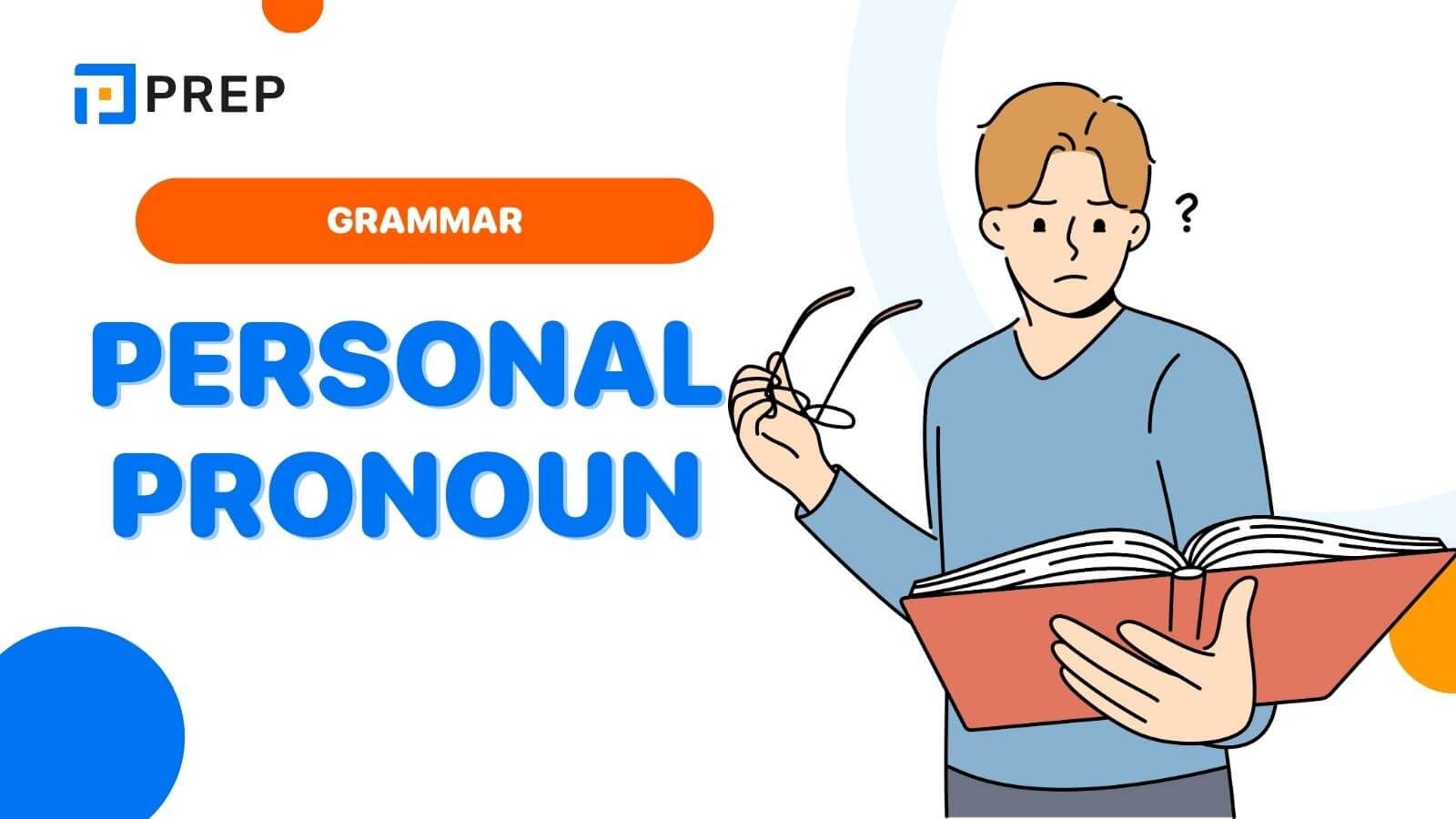Search blog
Personal Pronouns - Classification and Detailed Usage in English
The article "Personal Pronouns - Classification and Detailed Usage in English" provides a comprehensive framework for understanding and correctly using personal pronouns in English. It systematically explores how pronouns are classified by case (subjective vs. objective), person (first, second, third), number (singular vs. plural), and gender (masculine, feminine, neuter), establishing these classifications as the foundation for proper usage.
The content bridges theory with practice by demonstrating how these classification systems directly inform three essential usage rules: selecting the correct case based on grammatical role, ensuring pronoun-antecedent agreement, and maintaining clear pronoun reference. The article also addresses evolving language norms, particularly regarding the singular "they" as a gender-neutral option, and identifies common errors that stem from misunderstanding these classification principles.

- Introduction: Defining Personal Pronouns and Their Importance
- The Roster: Identifying English Personal Pronouns
- Core Principles of Personal Pronoun Classification
- Applying the Classification: Detailed Usage Rules in Practice
- Navigating Specific Usage Scenarios and Nuances
- Contextualizing Personal Pronouns: Relation to Other Pronoun Types
- Conclusion: Integrating Classification and Usage for Effective Communication
Introduction: Defining Personal Pronouns and Their Importance
Personal pronouns are fundamental building blocks of the English language that substitute for nouns and refer to grammatical persons within communication. These specialized words allow us to replace names and other nouns to create more fluid, less repetitive sentences while maintaining clarity about who or what we're discussing. Understanding the classification and proper usage of personal pronouns is not merely an academic exercise—it forms the backbone of grammatically accurate and effective communication in English.
The importance of mastering personal pronouns cannot be overstated. Incorrect usage can lead to confusion, ambiguity, and even inadvertently change the meaning of your sentences. Whether you're writing an academic paper, crafting a business email, or engaging in everyday conversation, proper personal pronoun usage signals linguistic competence and enhances your ability to communicate precisely.
This article aims to provide both a systematic framework for classifying personal pronouns and detailed rules for their practical application in various contexts, helping you navigate the complexities of English grammar with confidence.
The Roster: Identifying English Personal Pronouns
Before diving into complex classifications and usage rules, it's essential to identify the complete set of standard personal pronouns in English. These fundamental words form the basis of our pronoun system and are categorized initially by their form as either subject or object pronouns.
|
Person |
Number |
Subject Form |
Object Form |
|
First |
Singular |
I |
me |
|
First |
Plural |
we |
us |
|
Second |
Singular/Plural |
you |
you |
|
Third |
Singular (Masculine) |
he |
him |
|
Third |
Singular (Feminine) |
she |
her |
|
Third |
Singular (Neuter) |
it |
it |
|
Third |
Plural |
they |
them |
This comprehensive roster forms the foundation for understanding how personal pronouns function within the English language system, providing the building blocks for more detailed classification and usage rules.
Core Principles of Personal Pronoun Classification
Understanding personal pronouns requires a systematic approach to their classification. Each pronoun exists within multiple classification dimensions that determine its proper usage. The following core principles provide the framework for categorizing every personal pronoun in English.
Classification by Case: Subjective (Nominative) vs. Objective
Case in grammar refers to the relationship between a pronoun and other words in a sentence, determining its form based on its grammatical function. This classification represents one of the most fundamental distinctions in personal pronoun usage.
-
Subject pronouns (also called nominative case) function as the performers of actions within sentences. They typically appear before the verb and answer the question "Who or what is doing the action?" The complete set includes: I, you, he, she, it, we, and they.
For example: "I am writing an email." Here, "I" performs the action of writing.
-
Object pronouns (objective case) receive actions or function as the objects of prepositions. They answer questions like "To whom?" or "For whom?" and include: me, you, him, her, it, us, and them.
For example: "The teacher assigned the project to us." In this sentence, "us" receives the action—we are the recipients of the assignment.
-
The distinction becomes particularly important in complex sentences: "She invited him and me to dinner." Here, "she" performs the action (subject), while "him" and "me" receive it (objects).
This case-based classification forms the primary structural framework for personal pronoun usage and is essential for grammatical accuracy.
Classification by Person: First, Second, and Third
Grammatical "person" categorizes pronouns based on their relationship to the communication process, creating a perspective-based classification system.
-
First person pronouns refer to the speaker or writer and include "I" (singular) and "we" (plural). These pronouns place the speaker as the subject or object of the sentence. Example: "I believe we should reconsider our approach."
-
Second person pronouns address the listener or reader directly. In modern English, "you" serves as both the singular and plural form in both subject and object positions. Example: "You must submit your application by Friday."
-
Third person pronouns refer to people or things being discussed that are neither the speaker nor the listener. These include "he," "she," "it" (singular), and "they" (plural), along with their object forms. Example: "She mentioned that they would arrive late."
This classification by person allows the language to clearly indicate the relationship between the speaker, audience, and those being discussed, creating the essential framework for establishing perspective in communication.
Classification by Number: Singular vs. Plural
Number classification distinguishes between singular pronouns (referring to one person or thing) and plural pronouns (referring to multiple people or things).
-
Singular personal pronouns include: I, you (singular), he, she, it, and their respective object forms. Example: "He is presenting his findings tomorrow."
-
Plural personal pronouns include: we, you (plural), they, and their respective object forms. Example: "They are reviewing the proposal together."
-
An interesting feature of English is that the second-person pronoun "you" functions as both singular and plural. Context usually clarifies whether one person or multiple people are being addressed.
-
This number distinction directly affects verb agreement, as singular subjects take singular verbs, while plural subjects require plural verb forms: "He walks to work daily." vs. "They walk to work daily."
Understanding this classification is essential for maintaining grammatical agreement throughout your sentences.
Classification by Gender: Masculine, Feminine, and Neuter (Third Person Singular)
Gender classification applies specifically to third-person singular pronouns in English. Unlike some languages that assign gender to all nouns, English limits grammatical gender distinction to these specific pronouns.
-
Masculine pronouns ("he/him") traditionally refer to male persons or animals. Example: "He submitted his report yesterday."
-
Feminine pronouns ("she/her") traditionally refer to female persons or animals. Example: "She completed her presentation."
-
Neuter pronouns ("it/its") typically refer to inanimate objects, concepts, or sometimes animals when gender is unknown or irrelevant. Example: "The company announced its new policy."
This classification system has evolved significantly in recent years with increased recognition of gender diversity. The singular "they" (traditionally a plural pronoun) has gained acceptance as a gender-neutral option for individuals who don't identify within the traditional gender binary, or when gender is unknown. This evolution represents an ongoing adjustment in how personal pronouns are classified and used in contemporary English.
Applying the Classification: Detailed Usage Rules in Practice
Understanding the classification systems of personal pronouns provides the theoretical foundation, but applying these principles correctly requires mastering specific usage rules. The following guidelines show how classification directly informs proper personal pronoun usage in practical communication.
Rule 1: Correct Case Selection Based on Grammatical Role
The case classification (subjective vs. objective) directly determines which pronoun form to use based on its function in a sentence. This rule is particularly crucial in several common scenarios:
-
In simple sentences, the distinction is straightforward: Use subject pronouns for the performer of the action and object pronouns for receivers of actions or objects of prepositions. "I sent an email to her." (Not "Me sent an email to she.")
-
In compound subjects or objects, the same rule applies, even though the presence of multiple elements can sometimes cause confusion: "She and I attended the conference." (Not "Her and me attended...") "The manager praised him and me for our work." (Not "...him and I...")
-
After linking verbs (such as "to be"), technically the subject pronoun should be used since these verbs equate rather than show action, though objective forms have become common in informal usage: Formal: "It is I." / Informal: "It's me."
-
In comparisons using "than" or "as", the choice depends on the implied complete thought: "She runs faster than he ." (Subject of implied verb) "She likes him more than me." (Object of implied verb)
This rule relies entirely on understanding the Case Classification principle and applying it based on the pronoun's grammatical function rather than its position in the sentence.
Rule 2: Ensuring Pronoun-Antecedent Agreement
A pronoun must agree with its antecedent (the noun it replaces) in both number and, where applicable, gender and person. This rule draws directly from the Number, Gender, and Person classification systems.
The antecedent establishes which pronoun is appropriate: "James said he would submit the report." (Masculine singular antecedent) "The team celebrated its victory." (Neuter singular antecedent) "The employees received their schedules." (Plural antecedent)
This agreement becomes particularly important with collective nouns (group, team, committee, etc.) and indefinite pronouns (everyone, somebody, none):
Collective nouns can take either singular or plural pronouns depending on whether the group is acting as a unit or as individuals: "The committee submitted its final recommendation." (Acting as a unit) "The committee returned to their offices after the meeting." (Acting as individuals)
Indefinite pronouns typically follow set patterns:
-
Always singular: everyone, anybody, each, either, neither, someone
-
Always plural: both, few, many, several
-
Context-dependent: all, any, most, none, some
For example: "Everyone should bring his or her textbook." (Or increasingly acceptable: "Everyone should bring their textbook.")
This rule fundamentally depends on correctly applying the Number, Person, and Gender classification systems to maintain consistency between pronouns and their antecedents.
Rule 3: Maintaining Clear Pronoun Reference
While not directly tied to a single classification principle, clear pronoun reference depends on understanding which specific noun (classified by number, gender, and person) the pronoun replaces. Ambiguous pronoun reference occurs when multiple potential antecedents could match the pronoun's classification.
-
Consider this ambiguous example: "John told Michael that he had won the award." Who won? The pronoun "he" could refer to either John or Michael since both are masculine singular nouns.
-
To resolve such ambiguity: "John told Michael, 'You have won the award.'" (Using direct speech) "John informed Michael about Michael's award win." (Repeating the noun)
This rule requires careful attention to how pronouns interact with potential antecedents based on their classification characteristics, ensuring your meaning remains clear to readers.
Navigating Specific Usage Scenarios and Nuances
Beyond the core usage rules, several specific scenarios present unique challenges in personal pronoun application. Understanding these nuances helps navigate complex usage situations with confidence.
Detailed Usage: The Singular 'They'
The pronoun "they" presents an interesting classification challenge, as it traditionally functions as a third-person plural pronoun but has increasingly been accepted as a singular form in two specific contexts.
-
For individuals who identify as non-binary, "they/them/their" pronouns provide gender-neutral language options. This usage requires singular verb agreement despite the pronoun's plural form: "Alex said they are coming to the meeting." (Not "Alex said they is coming...")
-
For unspecified or hypothetical persons when gender is unknown: "If a student wants extra help, they should contact the professor."
This usage has gained acceptance in many major style guides, including the Chicago Manual of Style and the APA Publication Manual, though some formal contexts still prefer workarounds like "he or she" for singular antecedents with unknown gender.
Understanding this evolution in personal pronoun usage demonstrates how classification systems can adapt over time while maintaining their fundamental purpose of clear communication.
Common Usage Errors Stemming from Classification Confusion
Many common personal pronoun errors result directly from misunderstanding the classification principles that govern their usage:
-
Incorrect case selection, particularly in compound constructions, often stems from confusion about grammatical role: Incorrect: "Between you and I" (Should be "Between you and me" as objects of the preposition) Incorrect: "Her and him went to the store" (Should be "She and he went to the store" as subjects)
-
Faulty pronoun-antecedent agreement creates inconsistency in number or gender: Incorrect: "Each student must complete their assignment." (Traditional rule would require "his or her" for the singular "each student", though "their" is increasingly accepted) Incorrect: "The company announced they would expand." (Should be "it would expand" if referring to the company as a singular entity)
-
Confusion with possessive forms, particularly with contractions: Incorrect: "The dog wagged it's tail." (Should be "its tail" as the possessive form, not the contraction of "it is")
By recognizing how these errors relate directly to the classification principles, you can more easily identify and correct them in your own writing.
Contextualizing Personal Pronouns: Relation to Other Pronoun Types
Personal pronouns represent just one category within the broader system of pronouns in English. Understanding how they relate to other pronoun types helps establish their distinct role and avoid common confusions.
-
Personal pronouns (I, me, you, etc.) should be distinguished from possessive pronouns (mine, yours, his, hers, its, ours, theirs), which indicate ownership, and reflexive pronouns (myself, yourself, himself, etc.), which refer back to the subject within the same clause.
-
The distinction becomes particularly important in constructions where multiple pronoun types might seem appropriate: "This project belongs to John and me." (Personal pronoun as object) "This project is mine and John's." (Possessive pronoun)
-
Understanding personal pronoun case classification helps avoid confusion between these related pronoun types. Object personal pronouns (me, you, him, etc.) often get confused with reflexive pronouns (myself, yourself, himself, etc.) in situations like: Incorrect: "Please contact John or myself with questions." (Should be "me," as "myself" is reflexive and needs a subject reference)
By positioning personal pronouns within this broader context, you gain a more complete understanding of their specific function in English grammar.
Conclusion: Integrating Classification and Usage for Effective Communication
The classification of personal pronouns by case, person, number, and gender creates the foundation for understanding these essential grammar elements. This framework enables proper application of usage rules that govern pronouns in practice.
Core principles—correct case selection, pronoun-antecedent agreement, and clear reference—rely on proper classification application. Even evolving usages like singular "they" make sense through understanding how classification systems adapt.
Mastering both classification and practical usage rules enhances precision and clarity in communication. Understanding why pronouns function as they do elevates your language command from simple rule-following to true linguistic competence.

Hi I'm Chloe, and I am currently serving as an Product Content Administrator at Prep Education. With over five years of experience in independent online IELTS study and exam preparation, I am confident in my ability to support learners in achieving their highest possible scores.
Comment
Related posts
Search blog
Personalized roadmap
Most read
Register for a learning roadmap consultation
Please leave your information, and Prep will contact you for consultation right away!















